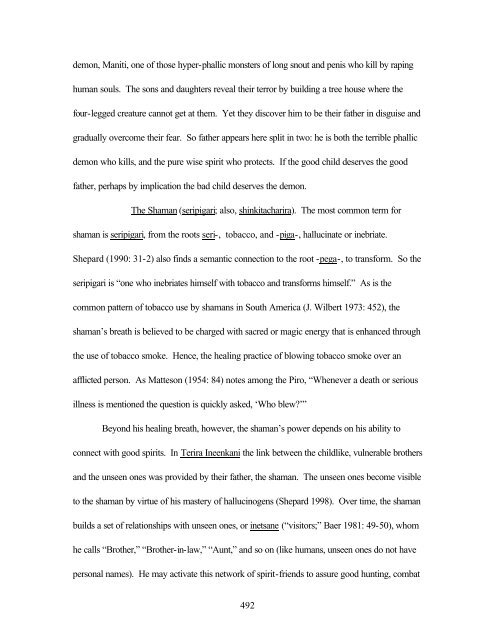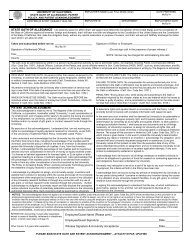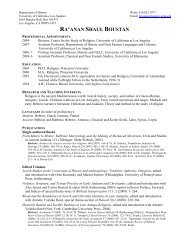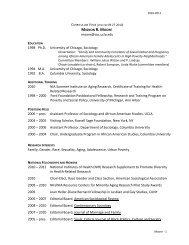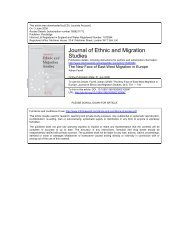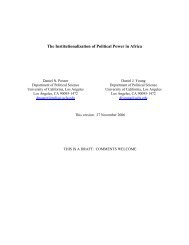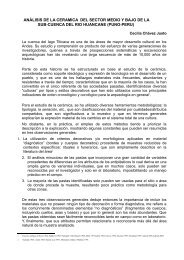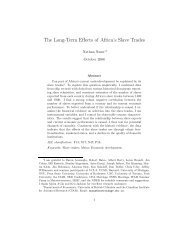433 Chapter Seven Cosmos For the Matsigenka of Shimaa, kameti ...
433 Chapter Seven Cosmos For the Matsigenka of Shimaa, kameti ...
433 Chapter Seven Cosmos For the Matsigenka of Shimaa, kameti ...
Create successful ePaper yourself
Turn your PDF publications into a flip-book with our unique Google optimized e-Paper software.
demon, Maniti, one <strong>of</strong> those hyper-phallic monsters <strong>of</strong> long snout and penis who kill by raping<br />
human souls. The sons and daughters reveal <strong>the</strong>ir terror by building a tree house where <strong>the</strong><br />
four-legged creature cannot get at <strong>the</strong>m. Yet <strong>the</strong>y discover him to be <strong>the</strong>ir fa<strong>the</strong>r in disguise and<br />
gradually overcome <strong>the</strong>ir fear. So fa<strong>the</strong>r appears here split in two: he is both <strong>the</strong> terrible phallic<br />
demon who kills, and <strong>the</strong> pure wise spirit who protects. If <strong>the</strong> good child deserves <strong>the</strong> good<br />
fa<strong>the</strong>r, perhaps by implication <strong>the</strong> bad child deserves <strong>the</strong> demon.<br />
The Shaman (seripigari; also, shinkitacharira). The most common term for<br />
shaman is seripigari, from <strong>the</strong> roots seri-, tobacco, and -piga-, hallucinate or inebriate.<br />
Shepard (1990: 31-2) also finds a semantic connection to <strong>the</strong> root -pega-, to transform. So <strong>the</strong><br />
seripigari is “one who inebriates himself with tobacco and transforms himself.” As is <strong>the</strong><br />
common pattern <strong>of</strong> tobacco use by shamans in South America (J. Wilbert 1973: 452), <strong>the</strong><br />
shaman’s breath is believed to be charged with sacred or magic energy that is enhanced through<br />
<strong>the</strong> use <strong>of</strong> tobacco smoke. Hence, <strong>the</strong> healing practice <strong>of</strong> blowing tobacco smoke over an<br />
afflicted person. As Matteson (1954: 84) notes among <strong>the</strong> Piro, “Whenever a death or serious<br />
illness is mentioned <strong>the</strong> question is quickly asked, ‘Who blew?’”<br />
Beyond his healing breath, however, <strong>the</strong> shaman’s power depends on his ability to<br />
connect with good spirits. In Terira Ineenkani <strong>the</strong> link between <strong>the</strong> childlike, vulnerable bro<strong>the</strong>rs<br />
and <strong>the</strong> unseen ones was provided by <strong>the</strong>ir fa<strong>the</strong>r, <strong>the</strong> shaman. The unseen ones become visible<br />
to <strong>the</strong> shaman by virtue <strong>of</strong> his mastery <strong>of</strong> hallucinogens (Shepard 1998). Over time, <strong>the</strong> shaman<br />
builds a set <strong>of</strong> relationships with unseen ones, or inetsane (“visitors;” Baer 1981: 49-50), whom<br />
he calls “Bro<strong>the</strong>r,” “Bro<strong>the</strong>r-in-law,” “Aunt,” and so on (like humans, unseen ones do not have<br />
personal names). He may activate this network <strong>of</strong> spirit-friends to assure good hunting, combat<br />
492


